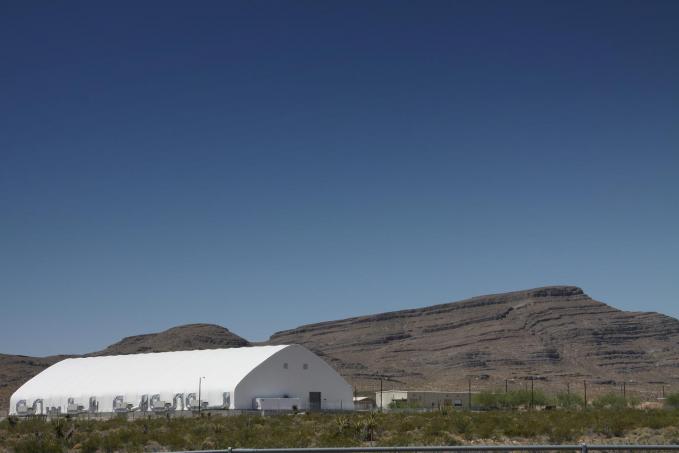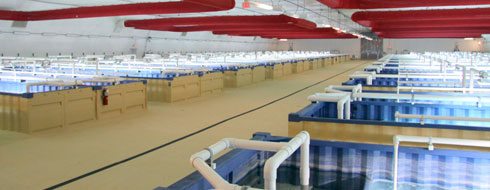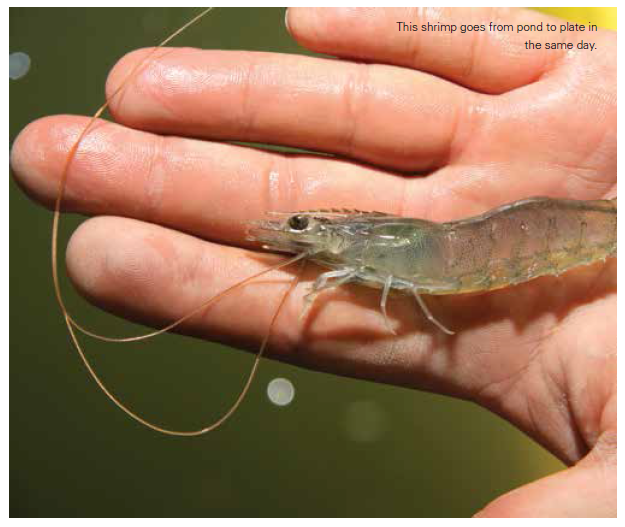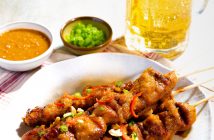Prawn farming: The Mojave Desert in Nevada, USA, is now home to a land-locked prawn farm. Not only is it a desert farm, but it is also making history as a remarkable use of desert space and very thin resources.


How the prawn farm looks from the outside
The Blue Oasis prawn farm grows local seafood for the Las Vegas strip restaurants, and here’s the good bit: the farm is on the outskirts of the city. This means the product can go from pond to plate in the same day, rather than be flown in from a foreign sea a million miles away. The prawn don’t need to be frozen, shipped, thawed, weighed and refrozen to get to where they need to be.


So how does this happen in a desert which has scarce water resources? Some mega-mind scientists have developed a system which not only is a self-contained closed system, but it could be built anywhere in the world, from the driest desert to the cold depths of Siberia. What this means is that once the initial water needed is in the building, theoretically it doesn’t ever need to be replenished. Blue Oasis recycle all of their water and actually use less water than the average home in Las Vegas. A farm that recycles its water is surely the model farm of the future?


Prawn green cred
The green credentials don’t stop there. The ‘farm’ was constructed with recycled materials, has an energy efficient lighting system, and uses no chemicals or antibiotics. It is an excellent model for anyone with a big empty desert that needs a purpose. So while it sounds like a lovely large aquarium, it is a farm in the true form, producing a high volume of protein for local markets.
But the good news is that it isn’t factory farming at its worst, in fact it is far from it. Unlike most frozen, imported prawn, the Nevada prawn farm do not use a water retention chemical called Tri-Poly Phosphate (TPP) or preservatives (like sodium bisulfites), which are often used to mask unsavory appearance and to extend shelf-life. The baby prawn are bred from a select group of purebred mating pairs whose lineage has been tracked for a minimum of six generations. Each generation is required to be certified pathogen free. So these little prawn are clean as a whistle and don’t need to see the doctor for a prescription every 5 minutes.


While this farm is already super-sustainable, there are other ways to keep environmentalists happy. And Blue Oasis are checking some of those boxes too – by providing net gains in protein to society.
Aquaculture
Traditional prawn aquaculture systems use up to 1.4 pounds of fish meal or oils for each pound of prawn production, which is a very poor conversion ratio. More or less traditional farming methods use up a lot of calories to make an end product with fewer calories, which is wasteful at best. Blue Oasis’s feed conversion ratio is close to 1:1 of which only 0.8 pounds is protein. As a result, there is a net gain of protein. And here’s another box checked: the other aspect of sustainability revolves around their ability to produce farmed food in a closed loop system with no effluent discharge, sludge removal or flocculation procedure. Because all the waste is reused, the Nevada prawn farm produces a product that has zero harmful effects on the environment.
At full capacity, Blue Oasis expects to house 4 million prawn at a time, ensuring a perpetual harvest for its clients. Company officials hope to eventually open farms in New York, Dallas, Chicago and other major American cities. Such inventive farming practices are the future of farming, especially with an ever-increasing world population.
So if you have a plot of land that looks a little lackluster, maybe you might consider becoming a prawn farmer. Bon Appétit!





